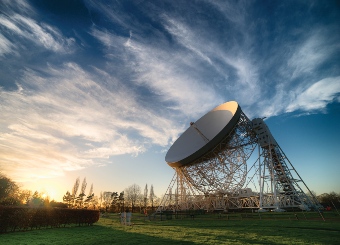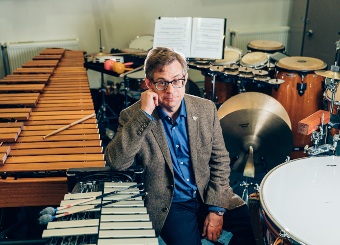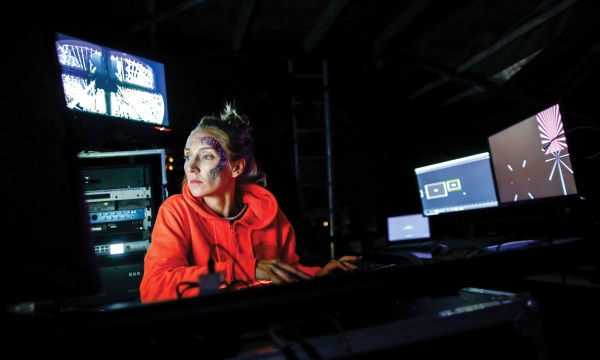Meet the recent Manchester graduate who has helped open up our view of the universe.
In his NASA hoodie, talking effusively about the iconic Lovell Telescope, Bart Wlodarczyk-Sroka’s passion for his subject is abundantly clear. That passion goes parallel with his talent too, as shown by his role in a team that has significantly improved chances of us finding extra-terrestrial life.
A recent graduate in MSc Astronomy and Astrophysics, Bart worked alongside Professor Mike Garrett, Director of the Jodrell Bank Centre of Astrophysics, and collaborated with Dr Andrew Siemion, Director of the Breakthrough Listen Initiative, a scientific programme in search for evidence of technological life in the universe. The findings allow us to explore a much larger section of the galaxy.
Utilising the views from the Green Bank Telescope in West Virginia and the Parkes Observatory in Australia, they were able to add stars up to 33,000 light years away to the search for life.
Zooming in
Speaking via Zoom, Bart uses the call itself as an analogy for the team’s work. “If I’m looking at you on my laptop screen, I can see you in the middle, but I can also see my TV out of the corner of my eye there, or my floor out of the corner of my eye over here,” he gestures.
The whole project started at the same time as lockdown, so I did most of it sitting exactly where I am. Technology didn’t really hold me back.
“Depending on how far away something is from the centre of whatever I’m looking at, it’s less in focus. Telescopes work on a similar principle.
“A lot of the data that is taken from telescopes assumes that the telescope is just pointing at whatever is at the centre of the beam. So, say I’m looking at the chair: you may think all I can see is the chair – but that’s not strictly true. I’m just focusing on the chair, but I can see everything around it as well.”
With this in mind, the team reanalysed existing data. While previously we were able to monitor around 1,400 stars and their systems, following further work on Bart’s thesis, we’re now able to study around 965,000.
What’s more, these intergalactic findings were achieved without leaving the home, let alone Earth. Like so many of us in the past year, Bart conducted most of his work through virtual meetings from his computer at home.
“The whole project started at the same time as lockdown, so I did most of it sitting exactly where I am. Technology didn’t really hold me back, I still had all the software I needed on my laptop,” he explains.
A broader canvas
This discovery offers a broader canvas to analyse in the search for extra-terrestrial life. When conducting such searches, scientists look for electrical signals that don’t resemble any natural phenomenon that can already be explained. This is how they find and explain things like black holes, galaxies moving apart and the universe accelerating.
“If we look at stars and analyse the data, we can see the frequency patterns. For example, the bandwidth might be a bit too narrow. In that event the explanation would be that there’s something wrong, something we can’t explain physically – or it might be extraterrestrial intelligence,” explains Bart, before breaking into a smile.
“It sounds interesting when I’m saying it like this, but most of the day I just sit there and code.”
Breakthrough Listen will soon move on to the next step of their plan, which is to observe up to one million of the nearest stars. Bart will be hoping to be part of the team too, as he looks to start a PhD in the near future.
And after all he’s achieved already, why shouldn’t he aim for the stars?





